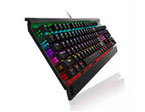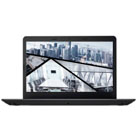Disinfection and Sterilization of Dental Blades: Best Practices
view count:130 classifyNEWS
In the field of dentistry, the proper disinfection and sterilization of dental blades are crucial to ensure patient safety and prevent the transmission of infections. As a university professor with expertise in dentistry, this article aims to provide an in-depth understanding of the best practices for disinfection and sterilization of dental blades.
1. Importance of Disinfection and Sterilization:
Dental blades come into direct contact with oral tissues, saliva, blood, and other potentially infectious materials. Therefore, it is imperative to eliminate microorganisms and prevent the transmission of infections. Disinfection and sterilization procedures ensure that dental blades are free from harmful pathogens, promoting a safe and sterile environment for dental procedures.
2. Pre-Cleaning:
Before initiating the disinfection and sterilization process, it is crucial to pre-clean dental blades to remove visible debris, blood, and other organic materials. This can be done by rinsing the blades under warm running water or by using a mild detergent solution. Cleaning should be done carefully to avoid any accidental injuries.
3. Disinfection:
Disinfection is the process of eliminating or reducing the number of microorganisms on the surface of dental blades. Intermediate-level disinfectants, such as quaternary ammonium compounds or phenolic disinfectants, are commonly used in dental settings. It is important to follow the manufacturer’s instructions regarding the concentration, contact time, and proper use of disinfectants. Dental blades should be completely immersed in the disinfectant solution for the recommended time and then thoroughly rinsed with sterile water.
4. Sterilization:
Sterilization is the highest level of microbial control, eliminating all forms of microorganisms, including bacterial spores. Dental blades, particularly those used for surgical procedures, require sterilization to ensure complete safety. Autoclaving, using steam under pressure, is the most common method of sterilization in dental settings. It is essential to follow the autoclave manufacturer’s instructions, including the proper packaging of dental blades in sterilization pouches or wraps. Proper sterilization cycles, including temperature, pressure, and exposure time, should be strictly adhered to.
5. Packaging and Storage:
After disinfection or sterilization, dental blades should be packaged in a manner that maintains their sterility until further use. Sterilization pouches or wraps should be sealed properly to prevent any contamination. It is important to label the packaging with the sterilization date, expiration date, and initials of the person responsible for sterilization. Dental blades should be stored in a clean, dry, and designated area away from potential sources of contamination.
6. Regular Maintenance and Quality Control:
Regular maintenance and quality control of dental blades are essential to ensure their effectiveness and longevity. Routine inspection of blades for any signs of wear, damage, or corrosion should be conducted. Any defective blades should be discarded and replaced promptly. Additionally, regular monitoring of sterilization processes through spore testing should be performed to ensure the efficacy of the sterilization equipment.
Conclusion:
Disinfection and sterilization of dental blades are critical aspects of dental practice to prevent the transmission of infections and ensure patient safety. Pre-cleaning, proper disinfection, and sterilization techniques are essential steps in maintaining a sterile environment. Packaging, storage, regular maintenance, and quality control play significant roles in sustaining the effectiveness of dental blades. By adhering to these best practices, dental professionals can ensure the highest level of safety and quality in dental procedures. Continuous education and staying updated on the latest guidelines are imperative for dental practitioners to provide optimal care to their patients.
 Circular blade_paper cutter blade_Dental blade non-standard customization blade-Meirente Blade Co., Ltd
Circular blade_paper cutter blade_Dental blade non-standard customization blade-Meirente Blade Co., Ltd













